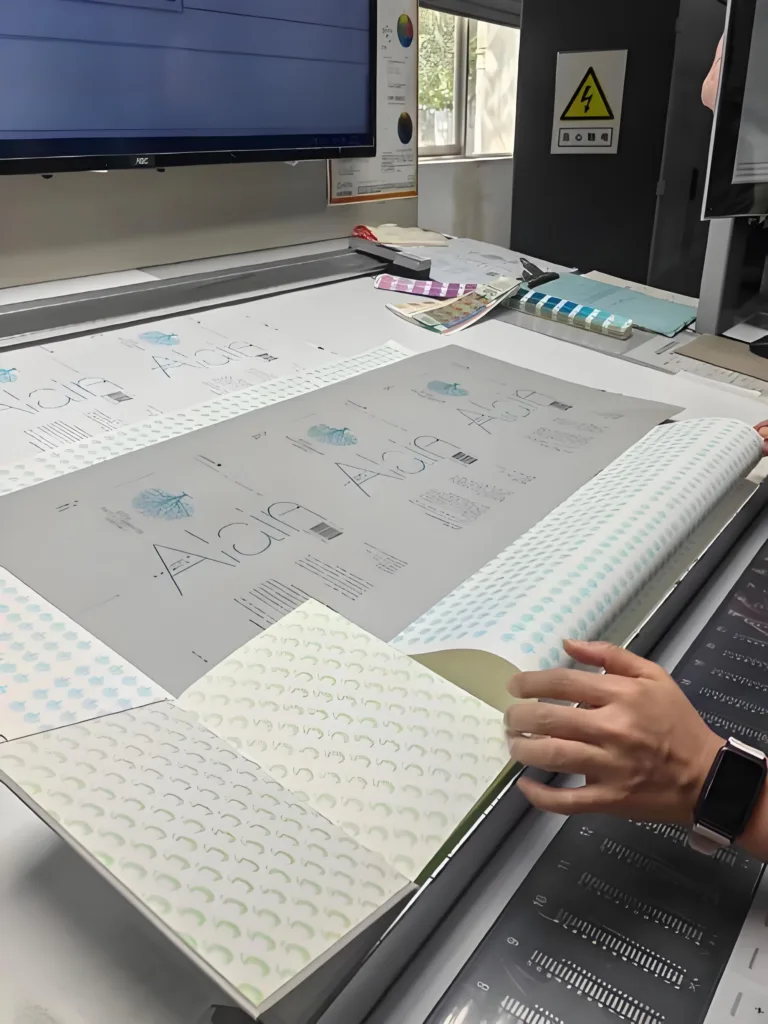As a small press, you know the challenges of bringing your amazing books to life. You pour your heart and soul into every manuscript, and you want the final product to reflect that passion. But with tight budgets and high expectations, finding the right printing solution can feel like searching for a needle in a haystack. Don’t worry, we’re here to help!
Choosing between domestic and international book printing factories depends on your priorities. Domestic printers offer faster turnaround times, easier communication, and potentially higher quality control, but often at a higher cost. International printers can be more cost-effective and offer a wider range of options, but may involve longer lead times and communication challenges.
This guide will walk you through the ins and outs of choosing between domestic and international book printing factories. We’ll explore the pros and cons of each option, help you define your needs, and guide you through the process of finding the perfect printing partner. By the end, you’ll be equipped to make informed decisions that align with your budget, quality standards, and publishing goals.
Domestic vs. International Book Printing: Weighing the Pros and Cons
Table: Domestic vs. International Book Printing: A Quick Comparison
| Feature | Domestic Book Printing Factories |
International Book Printing Factories
|
| Cost | Higher | Lower |
| Turnaround Time | Faster | Longer |
| Communication | Easier (shared language, time zone) |
Can be challenging (language barriers, time differences)
|
| Quality Control | Potentially higher due to proximity and easier communication |
Requires careful planning, clear specifications, and potentially third-party inspection
|
| Customization Options | May be more limited |
Wider range of materials, binding styles, and finishing options
|
| Order Size | More suitable for smaller print runs |
More cost-effective for larger print runs
|
| Shipping Costs | Lower (especially for US market) |
Higher (international shipping, customs duties)
|
| Supporting Local Economy | Contributes to the US economy |
May not directly benefit the US economy
|
| Environmental Impact | Potentially lower transportation footprint |
Potentially higher transportation footprint
|
The first step in your printing journey is understanding the differences between domestic and international book printing. Both options have their advantages and disadvantages, and the best choice for you will depend on your specific needs and priorities. Let’s dive in!
Domestic Book Printing

Advantages:
- Faster Turnaround Times: Time is of the essence, especially when you have deadlines to meet. Domestic printers often offer faster turnaround times due to their proximity and reduced shipping distances. Imagine needing books printed quickly for an upcoming book fair – a domestic printer could be your best bet.
- Easier Communication: Clear communication is crucial throughout the printing process. With domestic printers, you’ll likely experience smoother communication due to shared language and time zones. To learn more about how to communicate effectively with your printer, read our guide on How to Communicate with Chinese Printing Suppliers?
- Higher Quality Control: Maintaining high quality is essential for any book, but especially for those with intricate designs or specific color requirements. Domestic production often allows for closer oversight and easier communication, which can lead to better quality assurance. For instance, if you’re publishing an art book that demands precise color matching and high-resolution printing, a domestic printer might be the preferred choice.For a deep dive into quality control, you can read our Quality Control in Book Printing.
- Supporting Local Economy: For some publishers, supporting local businesses and the US economy is a key consideration. Choosing a domestic printer allows you to contribute to your community and promote domestic manufacturing.
Disadvantages:
- Higher Costs: One of the main drawbacks of domestic printing is the higher cost. Labor and materials are typically more expensive in the US, which can impact your budget. If you are looking at ways to reduce costs, check out our 10 Tips to Reduce Your Book Printing Costs Today!
- Limited Variety: While domestic printers offer quality, they may have a more limited range of customization options compared to their international counterparts.
International Book Printing
Advantages:
- Cost-Effectiveness: Perhaps the most significant advantage of international book printing is the potential for substantial cost savings. This can be a game-changer for small presses working with tight budgets.
- Wider Variety and Customization: International printing opens up a world of possibilities when it comes to materials and customization options. If you’re looking for a specific type of paper, a unique binding style, or intricate finishing touches, international printers often have a wider range to offer. Many overseas printers specialize in unique bookbinding techniques and offer a vast selection of specialty papers to give your book a distinctive look and feel.
- Capacity for Large Orders: If you’re planning a large print run, international printers are often well-equipped to handle high-volume orders efficiently. You can learn more about the benefits of printing in bulk in our article What are the Benefits of Print Books in Bulk?
Disadvantages:
- Longer Lead Times: One thing to keep in mind with international printing is that it typically involves longer lead times. This includes both production time and shipping time, which can be significantly longer than domestic options.
- Communication Challenges: Working with international printers can sometimes present communication challenges due to language barriers and time zone differences. These hurdles can be overcome with careful planning and clear communication strategies, but it’s something to consider.
- Quality Control Concerns: Ensuring quality from afar can be a concern when working with international printers. However, there are ways to mitigate this risk, such as requesting samples, establishing clear specifications, and potentially using third-party inspection services.
- Increased Shipping Costs and Logistics: International shipping can be complex and expensive. It’s essential to factor in shipping costs, customs duties, and potential logistical challenges when evaluating international printing options.
Making the Right Choice: A Step-by-Step Guide
Now that you have a good grasp of the pros and cons of each option, let’s move on to the exciting part – finding the perfect printing partner for your next masterpiece! But first, you need to do a little soul-searching (for your business, that is!).
Define Your Needs
Before you start your search, it’s crucial to define your specific printing needs. This will help you narrow down your options and find a printer that’s the perfect fit for your project. Here are some key questions to consider:
- What’s your budget? Be realistic about how much you can afford to spend on printing.
Pro Tip: Create a detailed printing budget that includes all potential costs, from setup fees to shipping expenses. - What’s your print run size? The number of books you need printed will significantly impact your costs and options. Smaller print runs may be more cost-effective with domestic printers or digital printing, while larger print runs might benefit from international printing’s economies of scale.
- What are your quality requirements? Are you printing a standard paperback or a high-end art book? Define your quality standards in terms of paper type, color accuracy, binding, and finishing.
- What’s your turnaround time? How quickly do you need your books printed? Factor in both production time and shipping time, especially if you’re considering international printing.
- Do you have any special needs? Do you need a specific type of paper, a unique binding style, or special finishing touches? Make a list of all your special requirements to ensure your printer can accommodate them.
Finding Potential Printing Partners
Once you have a clear picture of your needs, it’s time to start looking for potential printing partners. Here are a few avenues to explore:
- Online Resources: The internet is a treasure trove of information. Check out reputable online directories and platforms that list book printing companies. Industry associations and online printing marketplaces can be great starting points.
- Industry Events: Attending printing and publishing trade shows can be a fantastic way to connect with printers, see samples of their work, and learn about the latest industry trends.
- Referrals and Networking: Tap into your network of fellow publishers and authors. Ask for recommendations and learn from their experiences.
Evaluating and Selecting a Printer

Now that you have a list of potential printers, it’s time to put on your detective hat and do some investigating! Here’s how to evaluate and select the best printer for your project:
- Requesting Quotes: Don’t just settle for the first quote you receive. Get detailed quotes from multiple printers to compare prices and services. Make sure the quotes include all potential costs, so you’re not surprised by hidden fees later on.
- Reviewing Samples: Seeing is believing! Ask for samples of the printer’s work to assess the quality firsthand. Pay close attention to the details, such as paper quality, color accuracy, and binding.
- Checking Credentials and Certifications: Look for printers with industry certifications, such as FSC (Forest Stewardship Council) certification for sustainable forestry practices or ISO (International Organization for Standardization) certifications for quality management systems.
- Factory Visits (If Possible): If you have the opportunity, consider visiting the printing facility to see their operations firsthand. This can give you a better sense of their capabilities and commitment to quality.
- Communication and Responsiveness: Pay attention to how the printer communicates with you. Are they responsive to your inquiries? Do they answer your questions clearly and thoroughly? Good communication is essential for a smooth printing process.
Contracts and Collaboration
Once you’ve found the perfect printing partner, it’s time to seal the deal with a contract. Here are some key points to keep in mind:
- Key Contractual Terms: Make sure the contract clearly outlines all the essential details, such as payment terms, intellectual property rights, quality standards, and delivery terms.
- Building Long-Term Relationships: If you’re happy with your printer, consider establishing an ongoing partnership. This can lead to smoother communication, better pricing, and a deeper understanding of your needs.
Now, let’s move on to some real-world examples and expert opinions to help you solidify your understanding of the book printing landscape.
Case Studies and Examples

Let’s take a look at a couple of real-world examples to illustrate the decision-making process in action:
Case Study 1:
Imagine a small press specializing in art and photography books. They’re working on a beautiful coffee table book filled with vibrant images and intricate details. Quality is paramount, but so is budget. After careful consideration, they decide to partner with a printing company in China that specializes in high-end art book production.
Why this worked: The Chinese printer offered competitive pricing without sacrificing quality. They had experience working with similar projects and could provide the specialized printing techniques and materials needed to bring the book to life. The press mitigated risks by requesting samples, communicating clearly, and building a strong relationship with the printer.
Case Study 2:
Now picture a small press that publishes timely non-fiction books on current events. They need to get their books to market quickly to capitalize on the news cycle. In this case, they opt for a domestic printer, even though the costs are slightly higher.
Why this worked: Speed was the priority. The domestic printer could offer a faster turnaround time, ensuring the books hit the shelves while the topic was still hot. The ease of communication and proximity to the printer also allowed for quick adjustments and approvals, further streamlining the process.
These examples demonstrate that there’s no one-size-fits-all solution. The best choice depends on your unique circumstances and priorities.
As Janet Labuda, Professor of Supply Chain Management at Lehigh University, wisely points out, “The decision to manufacture domestically or overseas is complex, requiring a careful assessment of factors like cost, lead time, quality, intellectual property protection, and environmental impact.”
Unveiling Hidden Costs and Emerging Trends
Now, let’s dig a little deeper and uncover some valuable insights that might not be readily apparent. These “insider tips” can help you navigate the printing landscape with greater confidence and make choices that truly benefit your business.
Hidden Costs of Overseas Printing
While overseas printing can be incredibly cost-effective, it’s crucial to be aware of potential hidden costs that can sneak up on you.
- Communication Challenges: Miscommunications due to language barriers or time zone differences can lead to costly errors and reprints.
- Unexpected Shipping Delays: International shipping can be unpredictable. Factors like port congestion, customs delays, and unforeseen events can cause significant delays and impact your publication schedule.
- Quality Control Issues: While many overseas printers offer excellent quality, there’s always a risk of inconsistencies or defects. Addressing these issues from afar can be time-consuming and expensive.
The Rise of “China Printing + US Service” Providers
A growing trend in the printing industry is the emergence of US-based companies that offer a hybrid approach. They partner with printing factories in China to secure competitive pricing while providing local support and project management. This can be a great option for small presses that want the best of both worlds: cost-effectiveness and peace of mind.
Domestic Printing for Small Print Runs
Don’t assume that overseas printing is always the cheapest option. For smaller print runs (e.g., a few hundred books or less), domestic printing can actually be more cost-effective. This is because international shipping costs and minimum order quantities can make overseas printing less economical for smaller projects.
The Impact of Digital Printing
Digital printing is revolutionizing the book printing industry. It offers lower setup costs, faster turnaround times, and the ability to print on demand. This makes it an attractive option for small presses, especially for those printing smaller quantities or needing quick reprints. Some digital printing services even offer online platforms that allow you to manage the entire publishing process yourself.
The Growing Importance of Eco-Friendly Printing
Sustainability is becoming increasingly important in all industries, and book printing is no exception. Many printers now offer eco-friendly options, such as recycled paper, soy-based inks, and sustainable printing practices. Choosing an environmentally conscious printer can help you reduce your environmental impact and appeal to eco-conscious readers.
Conclusion
Navigating the world of book printing can be an adventure, but with the right knowledge and guidance, you can find the perfect printing solution for your needs. Remember to carefully consider your budget, quality requirements, turnaround time, and any special needs you may have.
By following the steps outlined in this guide, you’ll be well-equipped to make informed decisions and bring your book to life in a way that reflects your vision and passion. So, go forth and print with confidence!







